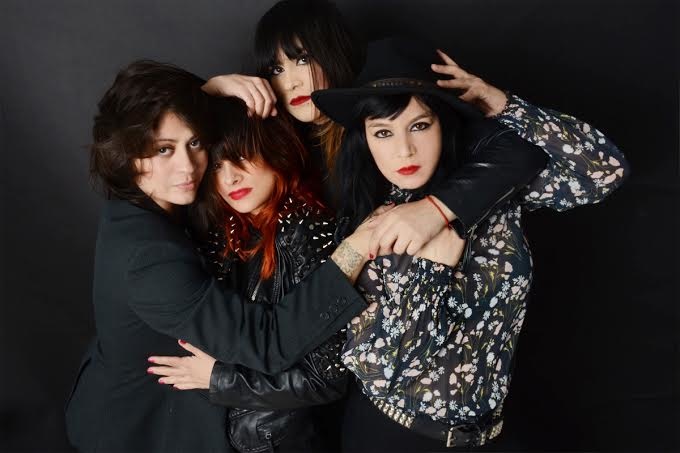That said, “Day of the Dead” is a monumental labor of love, and one for a good cause, being the latest in the “Red Hot” tribute series dedicated to HIV/AIDS issues since its first album, “Red Hot + Blue” back in 1990. The loving laborers here are twin brothers Aaron and Bryce Dessner from the band the National, who conceived and produced this set with an imaginative, sweeping run of artists and approaches to the Dead’s iconic catalog.
Among those enlisted, naturally, is a range of artists who have added their own creative stamp to American music. Wilco and the National (each in concert performances, joined by real live Deadster Bob Weir), Jim James of My Morning Jacket, Kurt Vile, Lucinda Williams, Flaming Lips, England’s Mumford & Sons, just to name a few. But what really gives this distinction are contributions from a variety of experimental and “serious” composers (a “Drums and Space” excursion teaming the band Man Forever with the So Percussion ensemble and art-rockers Oneida, and “Garcia Counterpoint,” fashioned by Bryce Dessner, who has been earning a reputation as a respected classical composer) and, in some ways most intriguingly, several African acts (South African group Tal National as well as Orchestra Baobab).
At times it seems a haphazard, hit-and-miss presentation. Just as Dead shows could be, of course. But often enough, the sequences are marked by flowing ideas, swooping from grace to power, from earthy American roots to time-stretching space, all with emotional resonance and sparkle. Just as Dead shows at their best could be, of course.
The bulk of the performers don’t stray too far from the Dead’s original versions. That’s OK. The architecture of the songs — mostly written by the team of Garcia and lyricist Robert Hunter, others by Bob Weir and John Perry Barlow, and still more folk and blues chestnuts — is sturdy. That’s what gave the Dead the framework in which to move in various directions in the course of a song, and a song’s evolution over the years. So here it allows some astute artists to give their own distinctive takes without straying too far from the blueprint. Courtney Barnett’s version of blues churner “New Speedway Boogie” is one such example. Jim James and Friends’ “Candyman” another. And one of the best is a bubbly, sunshine-filled take on “Sugaree,” teaming L.A. band Phosphorescent with singer Jenny Lewis.
On the other side of things, Marijuana Deathsquad (how could an act named that not be part of this project?) de- and re-constructs the anthemic narrative “Truckin’ ” into something in places closer to the Residents than the Dead. The Rileys strip Weir’s 7/4 reggae excursion “Estimated Prophet” of everything but its chord progression and then layer on bits of ambient and dissonant noise. The ensemble s t a r g a z e turns the already inner-space-exploring “What’s Become of the Baby” into an electronics-enhanced vocal chorale that could stand on the classical vocal circuit repertoire. And Vijay Iyer, the jazz star, turns “King Solomon’s Marbles,” originally a percussion-heavy instrumental from the 1975 album “Blues for Allah,” into an impressionist set of piano variations.
Here and there, and arguably too rarely, an artist manages to keep the song’s essential spirit and reset it in a new style altogether. The best of these may be where southern R&B belter Charles Bradley and the Menahan Street Band turn “Cumberland Blues,” originally a folk-country saga, into a sunk-soul grinder. To this point, the definitive Dead tributes were the two “Deadicated” collections from the mid-’90s. Those showed the wide appeal and affection for the Dead, with Paul McCartney, Elvis Costello and Perry Farrell among those paying tribute. “Day of the Dead” shows that, a couple of decades on from Jerry Garcia’s death, that embrace is even wider and stronger.
Stars at Night, “Stars at Night”
It’s just a crude iPhone video, shot a few months ago at the Black Rose pub on Pico in Los Angeles. But it pretty well captures the exciting intensity, and perhaps even sense of “discovery,” felt in seeing the young East L.A. band Stars at Night for the first time.
In the song, “Searching,” the quartet plays with tight control (they also have a song, “Control,” one of two that appear in both English and Spanish versions on the band’s new album), while teetering toward chaos, (the other both-languages song is titled “Shake Me”). It’s an edgy, uncertain balance that is at the core of some of the most exciting rock. And singer Irene Quiles manages to seem at once studied — she knows her Johnny, her Siouxsie, her Courtney — and combustibly spontaneous, as her bandmates fire away with dark fury. Joana Rubio’s thunderous drums often as not lead the charge, with Seleste Diaz’s stinging guitar and Elizabeth Banuelos’ roaring bass in overdrive.
The album “Stars at Night” — a debut of sorts, as a hasty 2010 release from the then-nascent band (with a somewhat different lineup) doesn’t really count — does not match the intensity of the show. Of course not. How could it? But it comes admirably close.
Here we have a strong first/second step from a band feeling its way on a DIY learning curve. Equal love for punk, metal and goth are evident throughout. You get the impression that they grew up in homes where Guns N’ Roses and the Cure were both favorites, but that they discovered Hole and Joy Division on their own. Sabbath, too. Here we have what is still very much a local band, tied to its East L.A. and Echo Park roots — a generation or two on from Los Lobos, closer to that band’s musical kids (including the son of Louie Perez and daughter of Cesar Rosas with their band LP3 & the Tragedy) in spirit and cultural orientation.
